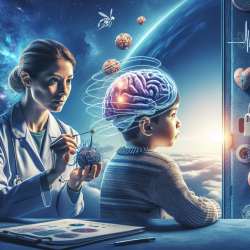Exploring Biological Mechanisms in Delusional Disorder Treatment
Delusional Disorder (DD) is a complex psychiatric condition characterized by persistent delusions. Despite the established role of dopamine receptor blockade in antipsychotic action, variability in treatment response suggests other biological systems may also be involved. A recent systematic review titled "Dopamine, Serotonin, and Structure/Function Brain Defects as Biological Bases for Treatment Response in Delusional Disorder" sheds light on this subject.
Key Findings from the Systematic Review
The review analyzed 14 studies, revealing three primary biological factors influencing treatment response in DD:
- Dopaminergic Dysfunction: Evidence suggests that dopaminergic dysfunction, particularly involving dopamine transporter (DAT) and D2/D3 receptors, plays a significant role in DD. This aligns with the hypothesis that increased extracellular dopamine levels may result from decreased DAT functioning.
- Serotonergic Dysfunction: The review highlights the involvement of serotonin pathways, with partial agonism/antagonism of serotonin receptors (5-HT1A and 5-HT2A) correlating with treatment response. This supports the use of antidepressants alongside antipsychotics in treating DD.
- Brain Structure/Function Impairments: Neuroimaging studies indicate that structural and functional brain irregularities, particularly in the temporal and parietal lobes, may predict treatment outcomes. Successful treatment often coincides with the normalization of these brain irregularities.
Implications for Practitioners
For practitioners, these findings emphasize the importance of considering multiple biological pathways when addressing treatment resistance in DD. While antipsychotics remain a primary treatment, incorporating antidepressants may enhance outcomes, particularly in cases with serotonergic involvement.
Furthermore, neuroimaging could serve as a valuable tool in identifying patients who may benefit from specific treatment strategies. Understanding the role of brain structure and function in treatment response can guide more personalized therapeutic approaches.
Encouraging Further Research
Despite the insights provided by the review, further research is needed to establish definitive biological bases for treatment response in DD. Large-scale, randomized controlled trials focusing on novel neurotransmitter systems, such as glutamatergic and GABAergic pathways, could provide additional understanding and improve treatment strategies.
Practitioners are encouraged to stay informed about ongoing research and consider participating in studies that explore these emerging areas. Collaboration with researchers can contribute to the development of more effective treatments for DD.
Conclusion
The systematic review underscores the complexity of DD and the need for a multifaceted approach to treatment. By integrating findings on dopaminergic, serotonergic, and brain structure/function factors, practitioners can enhance treatment outcomes and contribute to the growing body of knowledge in this field.
To read the original research paper, please follow this link: Dopamine, Serotonin, and Structure/Function Brain Defects as Biological Bases for Treatment Response in Delusional Disorder: A Systematic Review of Cases and Cohort Studies.










